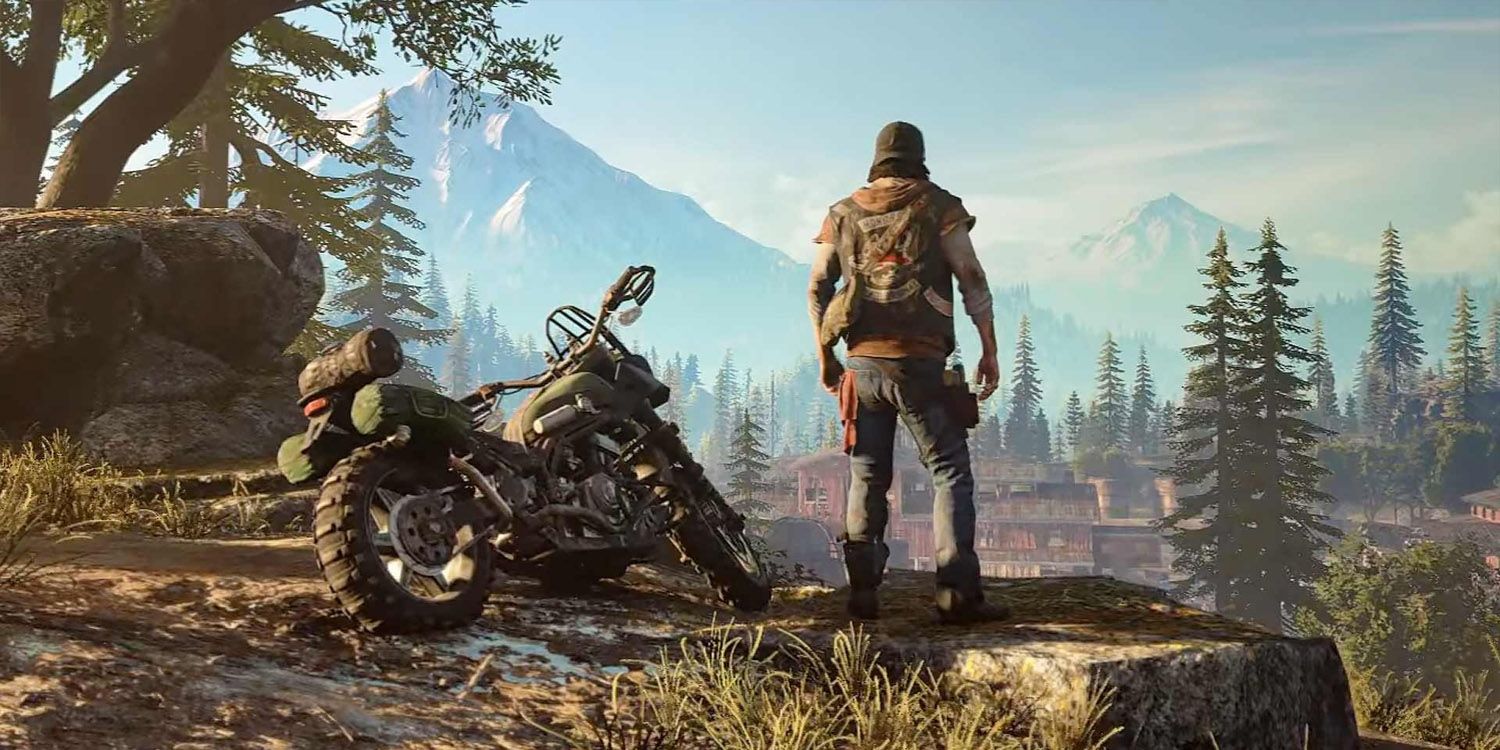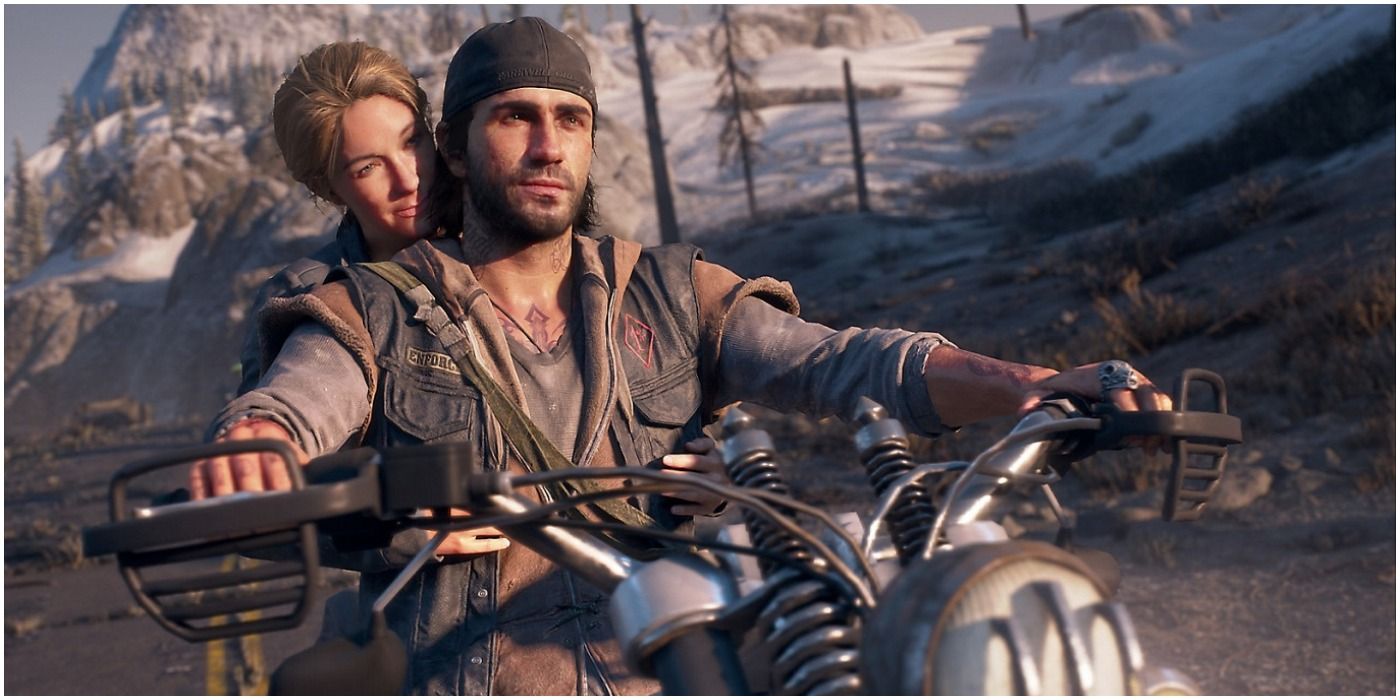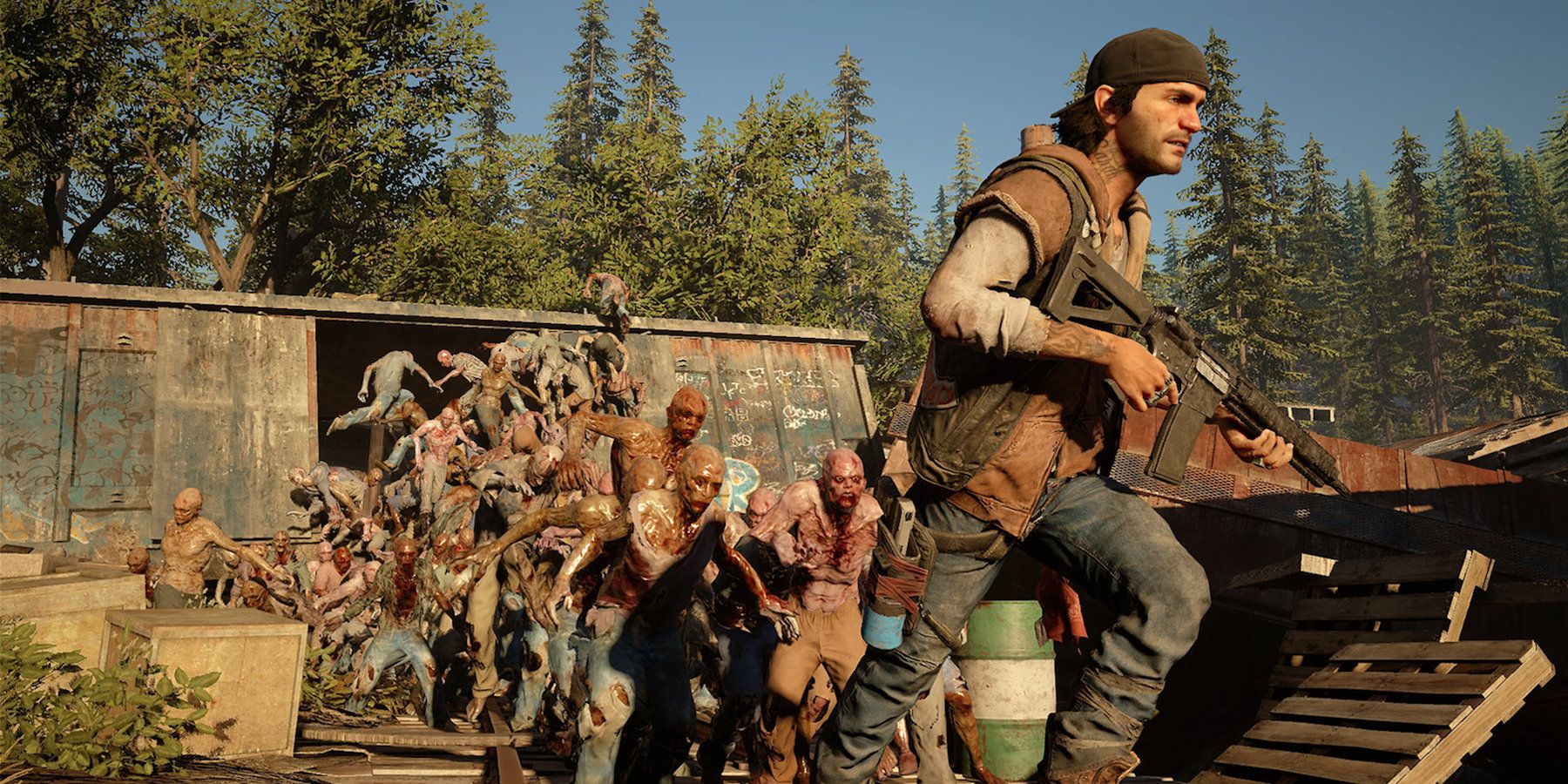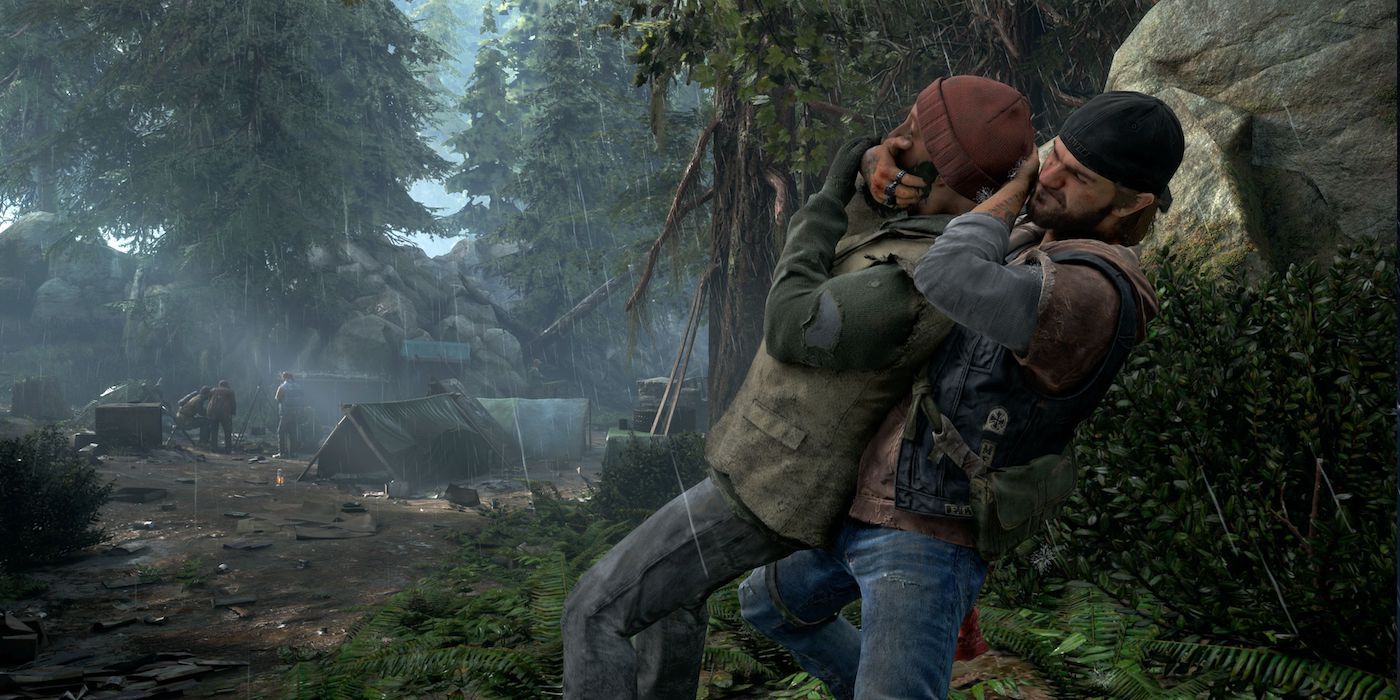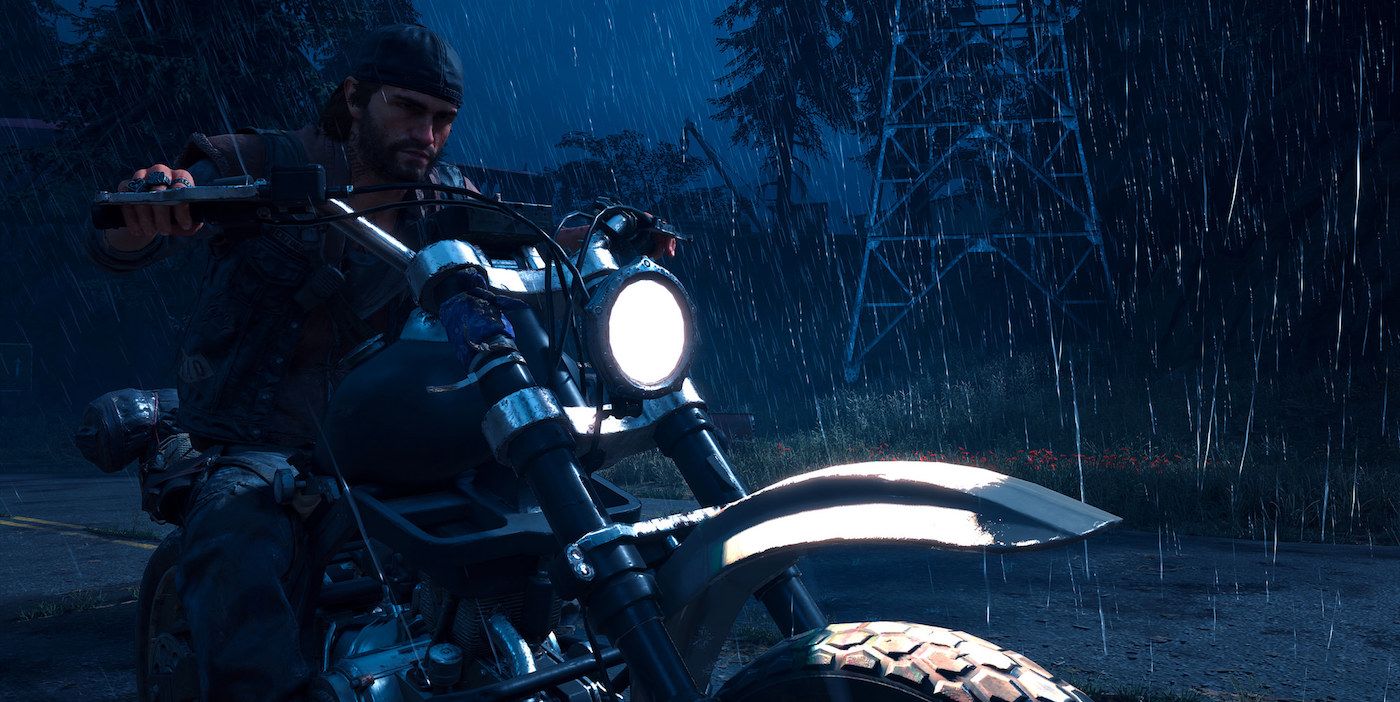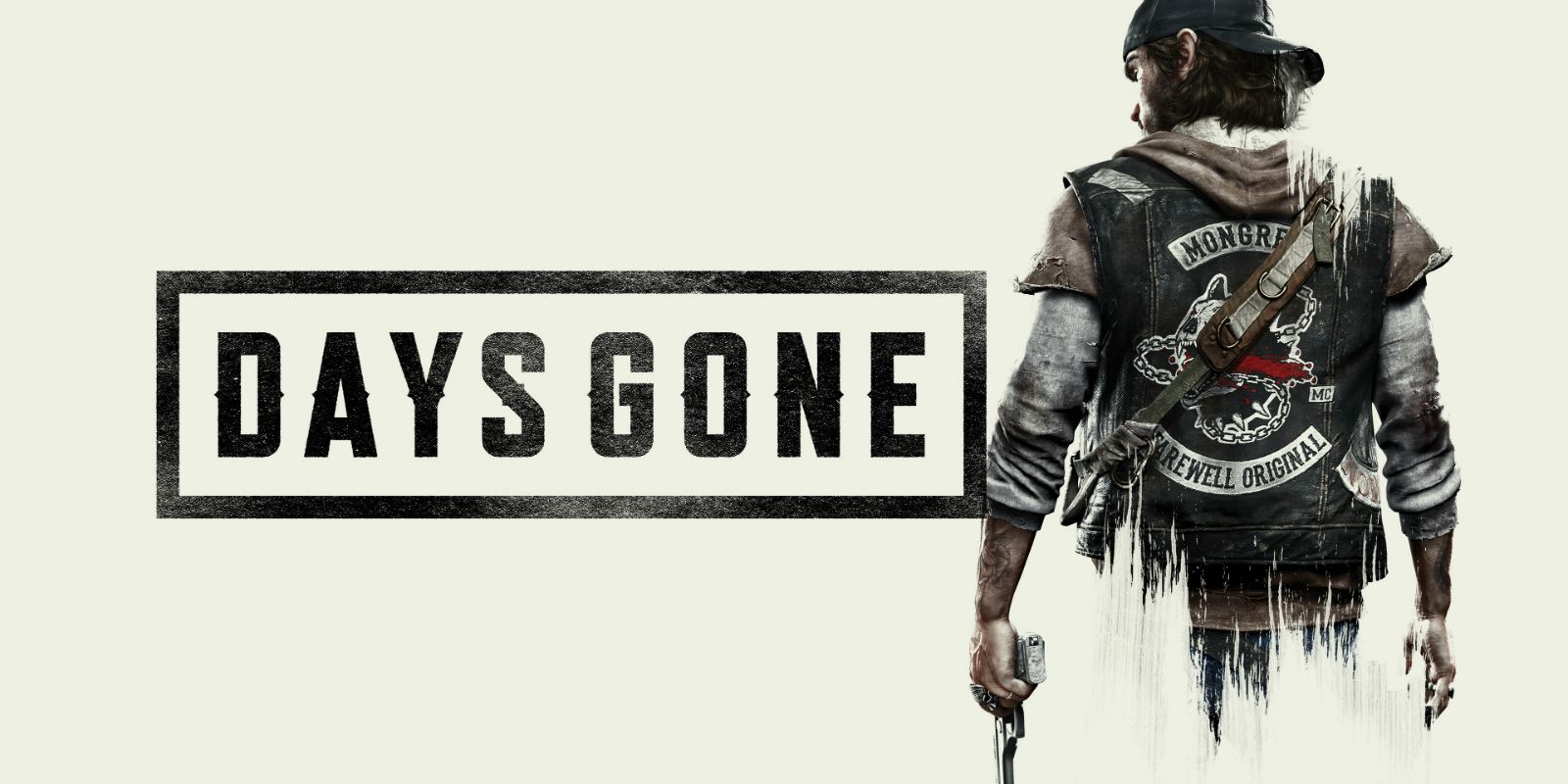Days Gone follows every post-apocalypse cue in the book. It does combat, level design, and bike riding well but struggles to overcome a basic story.
Zombies are everywhere. Yes, of course, they're everywhere in Sony Bend's open-world game Days Gone, but they're also everywhere in our apocalypse-obsessed culture. On TV there's the immensely popular Walking Dead and its admittedly less popular spinoff Fear the Walking Dead. Jim Jarmusch's star-studded zombie film The Dead Don't Die will release in theaters this June. And the undead can already be seen in a plethora of video games (Left 4 Dead and the recently released World War Z to give just two examples). In a crowded field, Days Gone establishes itself with the AAA world building and hours of content one would expect, but is supported by a story so lackluster, it's hard to stay engaged and keep fighting.
Though the devs may insist that Days Gone doesn't have any zombies, the so-called "freakers" sure follow all the tropes of the recently-risen-from-the-grave. There's the rotting skin, the hunger for human flesh, and the tendency to prefer dark places and large groups. How exactly the virus spread and what they are called by bikers and their compatriots are semantics. The only cliche missing from the game is "friend-bitten-and-doesn't-want-to-turn," but it's easy to miss it anyways as players will likely skip through the several hours of cutscenes that feel right at home in your least favorite season of your favorite zombie show.
Days Gone's biggest hurdle was trying to find a name for itself, so it doubled down by adding the preface "biker" to the "-open world game" tag. The story follows Deacon St. John, a man who wears the cut of the Mongrels MC, an Oregon-based motorcycle gang. It's been two years since the zombie- sorry, "freaker" apocalypse and Deacon has all but given up hope finding his wife, Sarah.
In the first of many cutscenes peppered throughout the game, the player witnesses Deacon put the injured Sarah on a helicopter, staying behind in an infested city with his ride-or-die pal, Boozer. Through context, we discover that the helicopter crashed and Sarah perished, and Deacon blames himself. Now he wanders the wastelands of a ruined world searching for freakers to kill and a way to put meaning back into his life. The "dead-wife" trope isn't really buoyed by anything substantive; there's glimmers of a past that might come back to haunt Deacon, and colorful characters light up the otherwise bleak world, but they're little more than dressing to Deacon's main goal.
Deacon is a drifter (a fact the game will never let you forget), wandering from camp to camp in the Pacific Northwest. Early on, players encounter Copeland, a free-radio loving leader of a small group of survivors, and Tucker, who runs a "work-camp" to the west, though more camps are introduced in the later game. Missions mostly consist of running errands for either party, such as rescuing hostages from other gangs, clearing marauder outposts, and carrying out bounties. These missions are all expertly designed, and though the majority are only optional, should be played. Whether the player is zooming past the tall pines, chasing down a rogue biker, or sneaking into a freaker-infested day-spa, discovering your preferred play-style and mastering the mechanics of Days Gone is a joy. Luckily, completing a mission not only rewards the player with satisfaction (and credits to spend at the corresponding camp), but also increases their "trust" in you. The higher the player's trust rating, the more gear is available for purchase.
And Days Gone has gear in spades. Aside from upgrading weapons to take down literal hordes of freakers, there are also bike upgrades to make your hot rod, hotter. Nitro is the most cartoonish and most immediately useful, giving players that extra burst of speed to close the distance to an enemy or widen it from a hundred or so flesh-eating foes. Weapons include traditional shotguns, low-level pistols, and expensive heavy-duty machine guns. But even as you obtain the highest level of gear, the main selling-point of the game never gets easy: wiping out hordes is a challenge that will keep players invested in the infestation long after the campaign is complete.
From the beginning, Sony Bend made it a point to showcase Days Gone's incredible environments and beautiful weather system. Your surroundings can change on a dime, as clouds brew overhead and rain begins to fall, or the mountainous terrain gets its first bit of snow. But interrupting that tranquility are thousands of freakers, grouped together in a "horde." These are by far the toughest enemies in the game despite there being loads of mutated boss freakers, like infected bears and giant "breakers." Sure, they go down in a few body shots, but they can easily overwhelm Deacon and take his health from 100 to 0 in a second flat. It's a tricky business of planning your attack, making sure you have enough supplies and the right weapons, and kiting the horde through choke points, taking out 20 or so at a time. The average horde appears to have around several hundred members, so it can take a while to burn 'em down, but finally besting a horde is immensely satisfying.
When Deacon isn't dealing with fighting freakers, he's battling other survivors. There are plenty of drifter gangs that are not distinguishable from your own groups (begging the question, why exactly do they have to die so gruesomely?) but the Rippers really make a name for themselves. The Rest in Peace (RIP) gang are a group of survivors that worship the freakers and are covered head to toe in scars. Their outposts are adorned with spikes and human carcasses. These enemies are a bit more unique and less morally ambiguous than your average "just-trying-to-survive" marauder. Their general vibe is very Mad Max, which happens to be a game in which Days Gone shares many similarities.
Days Gone is set in the third-person, just like your average PS4 exclusive shooter (read: Uncharted). Aiming and firing is a highlight; it's easy enough to snap to the head for a much-needed headshot, but doesn't feel cheap or bot-like. Especially with the addition of "Focus" a defacto "DeadEye" from Red Dead Redemption, that allows players to slow down time when aiming, firefights are difficult not because it's hard to land precise hits, but more because health can deplete fast and the cover system is underwhelming. Deacon can duck behind crates or fences, peeking up when the enemy reloads, but there's a lack of precision to the movement; he doesn't flush to the wall, just hides near it. This is a more traditionally first-person mechanic that doesn't work quite as well in the 3rd.
Driving Deacon's "hog" around is freeing. Not only does it allow the player to escape most encounters, but the rush of passing by lingering freaker clusters or scenic waterfalls never gets old. Though a player may occasionally run out of fuel and not be anywhere near a gas station or randomly-found gas can, more often than not, the road is where you'll find great moments of play: encounters with survivors, freakers, or enemies. They can be passed by or provide a welcome detour to the long journey on the road.
But through all its content, Days Gone seems to only borrow from well-established titles, without providing much in terms of nuance or innovation. Take its crafting system, straight out of The Last of Us. Deacon can make a bit more than Joel, pipe bombs for instance, but design remains the same. Players pick up (or loot from bodies) crafting materials like rags, nails, sterilizer, etc., and use these to instantly pop a survival item into existence. They can also upgrade melee weapons to be less degradable and more powerful, adding a saw blade to a bat or wire to a 2X4. The UI is well-made, but like a lot of Days Gone, it's all been done before.
One small thing that Days Gone does really well is the menu, allowing players to access upgradable skills, the map, objectives, and inventory with a single swipe on the PS4 controller pad. It's a nice touch and really streamlines the importance of checking in on how many credits Deacon might have at the time, what side missions can still be accessed, and how far away a horde might be. The "Story" section itself does a superb job of showing how much of the story is complete and at what percentage completion awards like vehicle skins and crafting recipes are given. Skills as well come with a fun twist: there's Melee, Ranged, and Survival categories, each with different tiers. Each tier contains three purchasable skills (with xp) but only two are needed to access the next tier. This makes for a fun meta-game of choosing the most useful skills (or those most attuned to your playstyle). The polish here might have been used across the rest of the game.
Days Gone requires a lot of processing power, with massive amounts of enemies on screen at once and detailed textured environments that change from day to night. Unfortunately on the base PS4, this means there is a lot of loading lag. Frames will drop to an unplayable sub-20 a second or textures will fail to load completely leading to game-breaking glitches. The first horde I fought got stuck on the edge of a cliff and were unable to move, making them easy target practice. A mission towards the finale skipped over a major fight because Deacon's bike fell through what looked to be a sturdy bridge. Nothing a few patches can't fix, but it doesn't erase the main issue: players shouldn't need a PS4 Pro to run a PS4 game.
Days Gone nails the tone and theme of a zombie game and sticks to its guns. "Surviving ain't living" is a phrase uttered by Boozer, the heart and soul of the game. But these messages and great high-concept questions are handled about as deftly as you might expect from a person named Boozer. It's all show with none of the punch that The Last of Us had. Deacon is generally unlikable, killing plenty of non-freakers in a very Nathan Drake-like fashion. He is so overly committed to his biker-shtick even after the world has ended that his motives feel sort of goofy and dated. He rabbles incessantly about "not killing unarmed women," while others talk about how "chivalry isn't dead." This macho-man perspective sort of puts a damper on some of the more interesting side-narratives. It's disappointing that the protagonist is a practical Rick Grimes that gives an "impassioned" speech about why there are no black members in his biker gang in a confusingly unnecessary and poorly-written flashback.
The game features so many disjointed story moments, where the player sits and watch Deacon interact, then is put in control to move him about 20ft, then watches another cutscene. It gives the appearance of the game being unfinished, where either less or more interactivity might have solved this issue (and cut down on loading screens). Additionally, the ludonarrative dissonance of Deacon and others appearing more "civilized" than other groups, then mowing down hundreds of relatively innocent humans is hard to look past. The acting is pretty good across the board, but Deacon's constant yelling on nearly every line deliver gets old fast. On a whole, the story is so rote and tired, that by the end, players might just want in to end.
And that's a shame because Days Gone has a lot of well-crafted moments. Most missions are satisfyingly tough and leave a lot of room for play-style flexibility. Side storylines pack a bit of emotional punch and shift the viewpoint a bit further from "whitest dude in Oregon." Battling hordes and riding the ol' bike through broken roads and dirt paths provide both the greatest challenge and the most relaxing experience. Everything that is done well is done very well, but this game feels less made by a group of passionate devs and more like it was made by an algorithm. Zombies, check, crafting, check, gritty veneer, and so on. So even while painstakingly taking out every horde, there's nothing to fall back on; no friends with whom Deacon can share his glory. The world and story of Days Gone are lonely, but if an open-world Last of Us meets Son of Anarchy sounds like your thing, then it might be worth the slog to kill some freakers.
Days Gone is out on April 26th on the Playstation 4 for $59.99. Screen Rant was provided with a digital copy for the purposes of this review.

